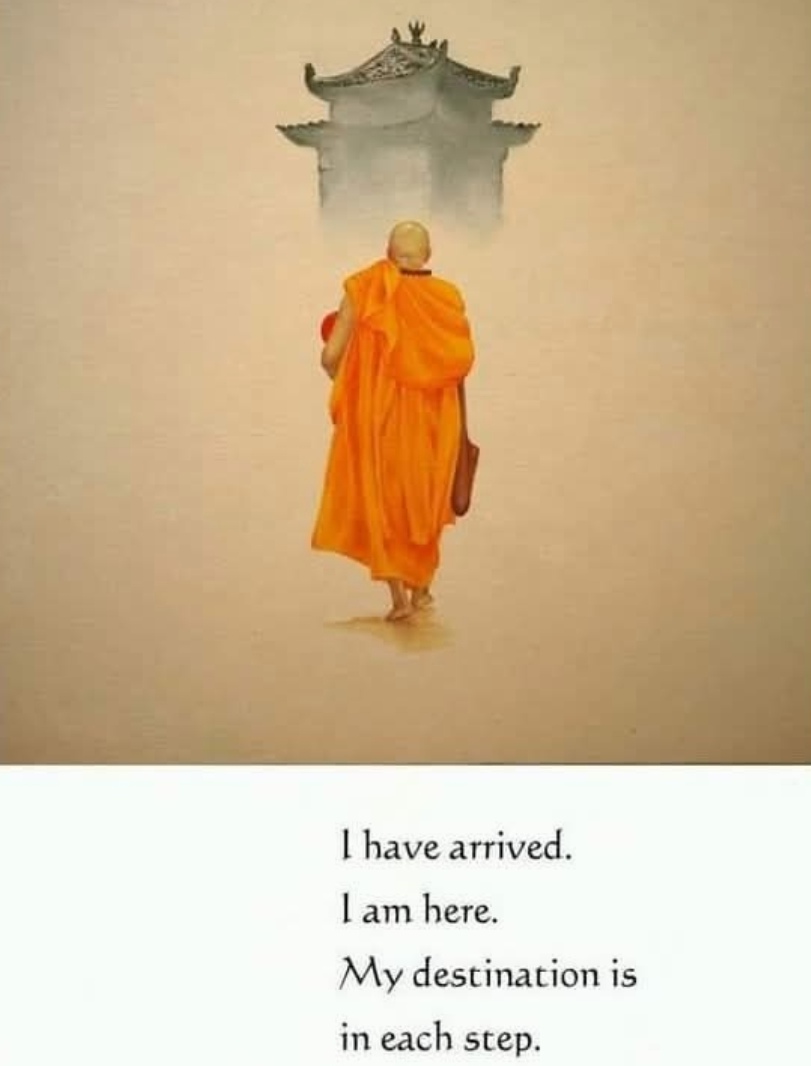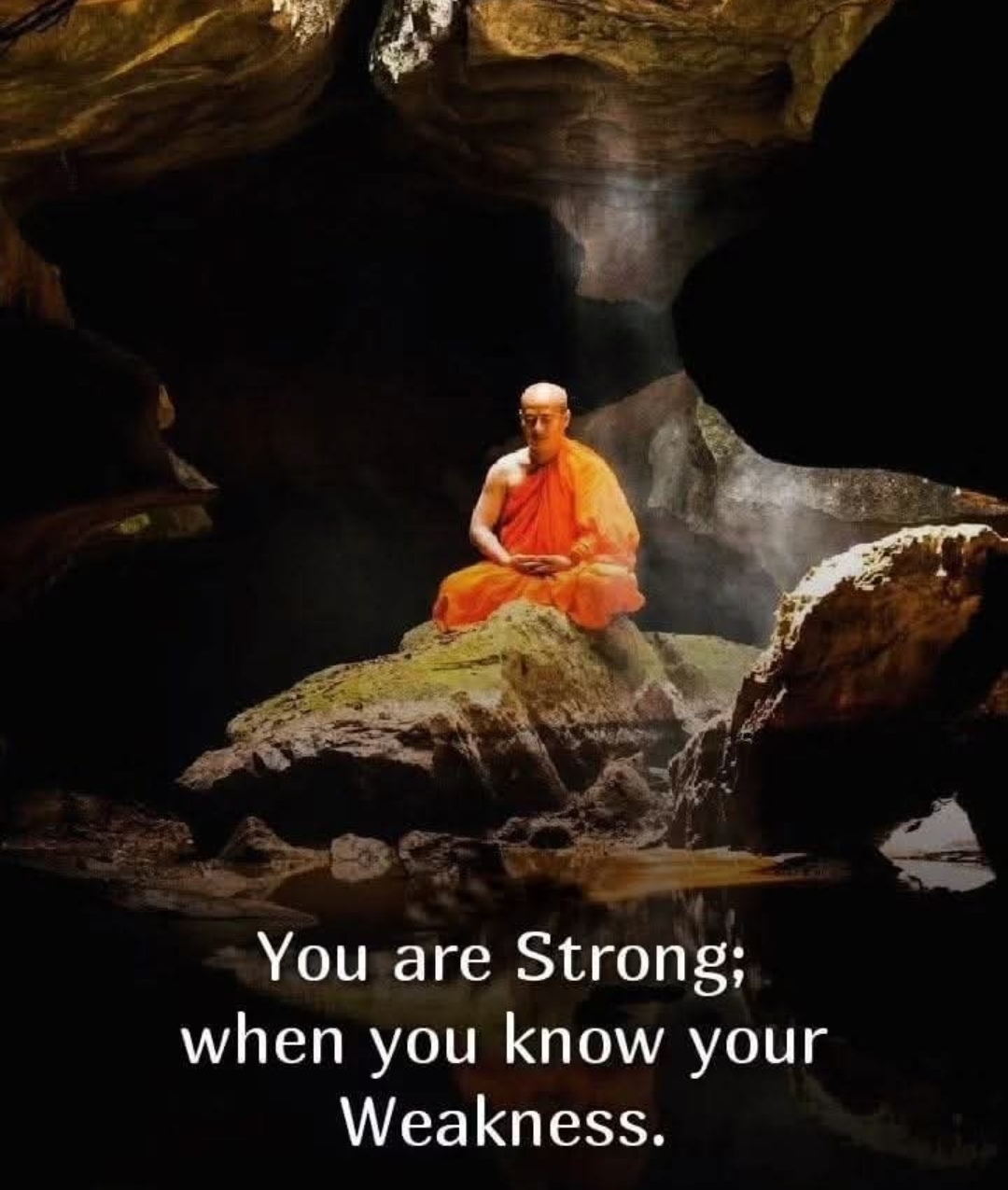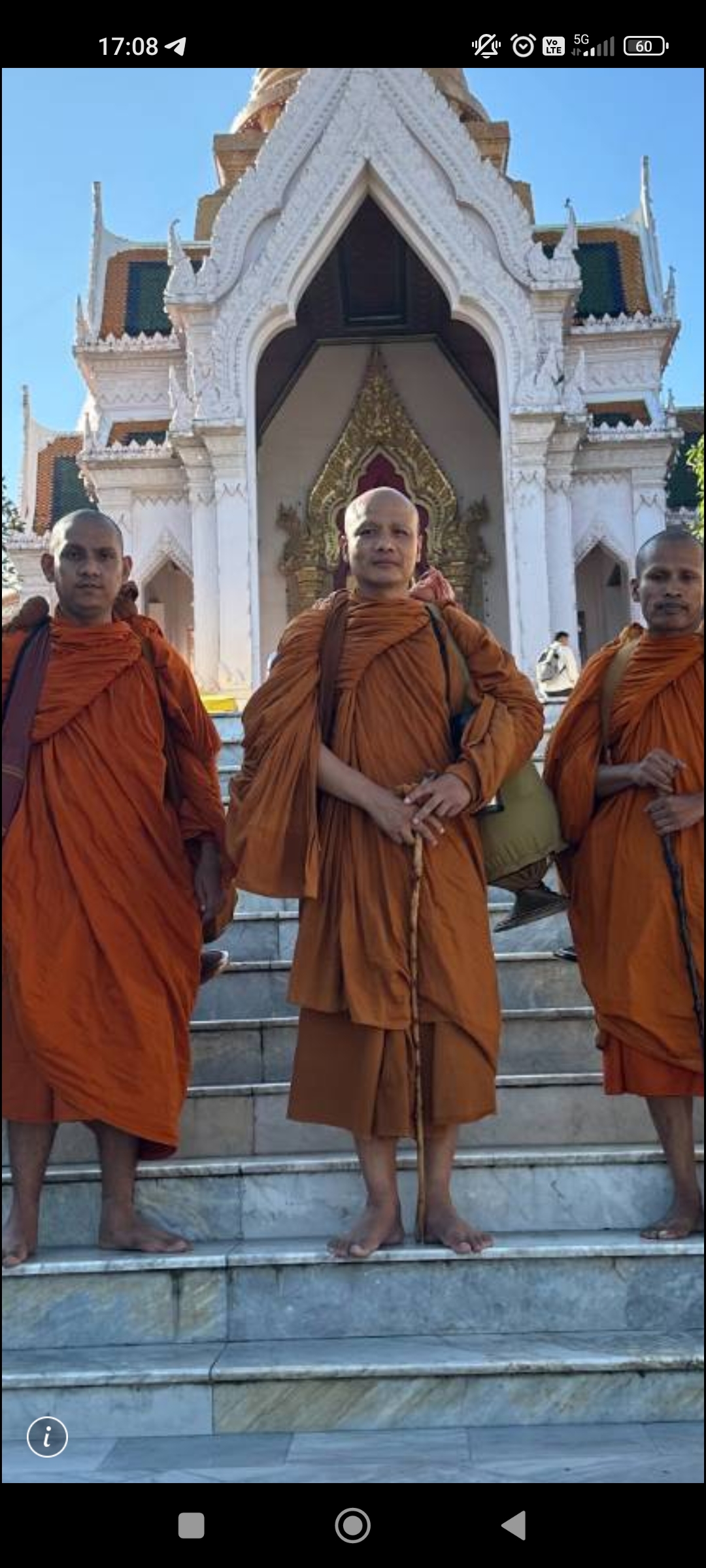Page number 1
False Dhamma teaching and fake monks
CM Sumares-LongI have noticed of late several “monks” spreading very strange teachings online. Upon investigation, I have found no lineage, no ordination, and almost zero qualifications re. Dhamma. And yet they have managed to penetrate quite deeply into the upper echelons of monastic life. One such person is a man going by the name of Ajahn Tri Dao, who has become wildly popular on TikTok, is not affiliated with any sangha or monastery, is not ordained, and seems to be teaching concepts very far removed from the canon. Another is someone called Vasu Bandhu (the name says it all). Have you heard of these people? Should we just keep quiet and let these people be? kind regards, CM Long EmailViews: 30
teacher
ccapocan not find a teacher, not available in soto temple, monasteries without ordination? Live in Central CA. trying to practice Thai forest vipassana now, and have practiced Soto, Rinzi, but still find difficulty at best, getting communications for a good practice from most? EmailViews: 9
practice
ccapopracticed Mahayana, now Theravadin, experience in tai chi Kung fu, healing acupressure. Is there a teacher in forest type of practice, that can be assisted and accessed from central CA? Have not found one in Mahayana, Soto temples and feel that I need to look elsewhere or move to Thailand, next to Penang where i have a home? EmailViews: 5
Reflections On Worldly Love
Santiago Based on these aggregates, carnal love arises… constructed around a fabricated self, then projected onto another who remains ultimately unownable, unrelatable, and untouchable. On the basis of these senses, your love is filtered through and confined by the senses. This is the worldly type of love. The noble type of love is not carnal, not of the senses, not of the aggregates; it is in neither the production of good nor bad kamma, the state of non-ownership. In that state of non-ownership, one cannot pass judgment; one cannot hate what one desires to control in another; one cannot take what is not given; one cannot create the conditions to cause physical or mental anguish to another uninitiated person. There is no one for it. For as long as there is the belief that there is a self in this other “person being transgressed,” through that created self they also take up that which is not theirs, resulting in the suffering of two established in ownership, two who wrongly take their refuge in ownership. From this stem all types of toxic relationships. Switching positions in the samsaric wheel, none of them blameless. Both created selves hopelessly magnetic to each other until there are no more eyes and no more teeth to be had. It is then indeed as the Tathagata said: 1). “Hatred is never appeased by hatred in this world. By non-hatred alone is hatred appeased. This is an eternal law” 2). “Bhikkhus, when the perception of impermanence is developed and cultivated, it eliminates all sensual lust, it eliminates all lust for existence, it eliminates all ignorance, it uproots all conceit “I am.” 3). “So, bhikkhus, with ignorance as condition, formations come to be; with formations as condition, consciousness; with consciousness as condition, mentality-materiality; with mentality-materiality as condition, the sixfold base; with the sixfold base as condition, contact; with contact as condition, feeling; with feeling as condition, craving; with craving as condition, clinging; with clinging as condition, being; with being as condition, birth; with birth as condition, ageing and death, sorrow, lamentation, pain, grief, and despair come to be. Such is the origin of this whole mass of suffering.” Anicca is truly a mercy for the Puthujjana. For without change, they would remain bound to their own fabrications forever. EmailViews: 15
Phra Ajahn Sao Kantasilo Mahathera
Andrew (solo) Phra Ajahn Sao Kantasilo Mahathera (1861-1941) Ajahn Sao and his student Ajahn Mun established the Kammatthana tradition. A true forest-dweller, Ajahn Sao left no written records of his teachings. Fortunately for us, another of his students — Phra Ajahn Phut Thaniyo — recorded “Ajahn Sao’s Teaching: A Reminiscence of Phra Ajahn Sao Kantasilo”, which offers us a glimpse of Ajahn Sao’s terse but powerful teaching style. https://www.forestmeditation.com/teachings/forest_tradition/sao/ajaan_teaching.html With Respect to the Buddha, Dhamma & Sangha. EmailViews: 17
Phra Ajahn Mun Bhuridatto
Andrew (solo) Phra Ajahn Mun Bhuridatto (1870-1949) Ajahn Mun was born in 1870 in Baan Kham Bong, a farming village in Ubon Ratchathani province, northeastern Thailand. Ordained as a Buddhist monk in 1893, he spent the remainder of his life wandering through Thailand, Burma, and Laos, dwelling for the most part in the forest, engaged in the practice of meditation. He attracted an enormous following of students and, together with his teacher, Phra Ajahn Sao Kantasilo Mahathera (1861-1941), established the forest meditation tradition (the Kammatthana tradition) that subsequently spread throughout Thailand and to several countries abroad. He passed away in 1949 at Wat Suddhavasa, Sakon Nakhorn province. The Ballad of Liberation from the Khandhas The Ever-present Truth A Heart Released: The Teachings of Phra Ajaan Mun Bhuridatta Thera With Respect to the Buddha, Dhamma & Sangha. EmailViews: 23
Law Of Reality

I seen how simple and direct the Dhamma is, that simply is just another word for “Law of Reality”. It is not telling us what not to do or to do. It is saying, this action/thought has an affect, That there’s cause and effect. If an object falls from a tall building, it will fall down, due to gravity If you overeat, the body will experience discomfort, due to nature of body If you hurt people, people will retaliate , due to human nature If you cling, you will suffer, due to nature of reality If there’s unwholesome thought, there will be bad feeling If there’s wholesome thought, there will be good feeling And is up to someone to find it themselves, **The Four Noble truth helps to simplify the investigation.** Any question of your life ” What about my xyz issue…/What about my goals…/What about my desire for meaningful life…” All put to stop It is simply, is there dukkha right now? Can you stop it, right now? It isn’t that the question of life doesn’t has skillful nature of giving rise to possibility of skillful investigation, but the question are still contaminated. The conditioning still runs deep. A sutta about **similee of wet log comes to mind, MN 36** > “Suppose a man wanted to light a fire with a wet, sappy stick lying in water. Could he do it?” > “No, —because it’s wet and in water.” :wood: :ocean: > > “Suppose he took a wet, sappy stick from land—still not in water. Could he light a fire?” > “No—because it’s still wet.”:wood::sweat_drops: > > “Suppose he had a dry, sapless stick lying on dry land. Could he light a fire?” > “Yes—because it’s dry and far from water.”:wood::sunny: :fire: In a way, you have far better chances to give rise to skillful question, and give rise to skillful action, and skillful result. Because one stop falling for the tricks of the mind. But one cannot get there, if the thoughts that seem so important at a glance, and one fall for it and question it. And the “Law of Reality” dictate, a mind that is still soak with conditioning, cannot necessary give rise to skillful investigation. In continuation of MN 36. > So it is with any brahman or contemplative** who lives withdrawn from sensuality in body & mind,** and whose desire, infatuation, urge, thirst, & fever for sensuality is relinquished & stilled within him: Whether or not he feels painful, racking, piercing feelings due to his striving, **he is capable of knowledge, vision, & unexcelled self-awakening**. This was the third simile — spontaneous, never before heard — that appeared to me The practice of Anapanasati is simple and direct. And Gladdening the mind as the first defence of the mind can be very powerful. It is a reminder that says ” No need for that, I’m already okay”. Not only to stop oneselves from falling for seeking out object, it stop oneselves from entertaining thought from the mind. Cause it has been seen clearly, it is unwholesome, very unwholesome. This sort of disgust can only be developed if one continue the practice. Helping unifying the mind to a state of calm, collected and composed. It does not comes from intellect. Intellect help in putting things together. But what help beyond is dropping of intellect, remain completely here and now, satisfied and content. A good friend of mine, Brett told me once ” You have not mastered Samadhi until you know you’re out of Samadhi” Over here, we’re training to cultivate Sati (Remembering to wake up and take a look) and Samadhi (Calm,composed, unification of mind) Both works together. Sati is the sword, Samadhi is the weight of the sword being swing. All of this works in cutting through our delusion. This is where the practice gets really solid, it doesn’t matter how much you know about Dhamma, what matter is how you put this together into a tool. And tool which one feel enthusiatic and delight in. And this “tool” can’t be taken away, no one can rob you away from your tool. This is the practice. One can even say, is the skill to take things easy, skill to be happy and joyful. Skill to be free EmailViews: 30
The Supreme Teacher

Theta Pati The Supreme Teacher is our own EVALUATION, described & explained by the Buddha & His Sangha. — The Teaching can be found in the Suttas and its basis is made by peace of mind coming from Mindfulness, that allows right Evaluation. Right Evaluation means that Discernment grows and Wisdom increases. Knowing how things really are takes to more Mindfulness and deeper Concentration, that, together, take to better Discernment. As anyone can see, the Effort in the practice is personal, a Teacher only points the way, explains how to walk that way, how to overcome obstacles found on it and what its result is. From our side we must be keen to learn and eager to understand what needs to be done for increasing the level of our knowledge, because Wisdom defeats Ignorance and sets us free. Thoughts create moods and mental fermentations leading to craving and to clinging or attachment. Thoughts have Intention as their origin and happiness as their Cause, that is why one needs Evaluation, because it allows to examine each thought and to understand if right or its truth. What truth? As Intention, if the thought is useful for our progress on the Noble Path. & As Cause, if the thought leads to a temporary happiness or to the supreme unshaking happiness of the Heart. This is the main distinction to personally always evaluate and then understand about each thought, because this distinction makes us abandon unuseful or harmful thoughts linked to the world and makes us see, choose & stick only to thoughts based on useful Intentions & Causes (taking to positive results), that need to be found and developed. One can learn from the Suttas like from a Teacher, however, one also has to look for their right explanation from different Monks. But in order to understand what? In order to understand at what step one is, what needs to be done and how to do it in order to progress smoothly and rightly, without jumping too high or too low, when not yet ready. In other words, we are the Teachers of ourselves, there is no other Teacher. However, we need to know what & how to evaluate and to know as beneficial and what & how to avoid or uproot as not beneficial, for our own progress on the Spiritual Path. That is what Teacher means, that we look for and find specific explanations from others practicing the same path, letting us clearly understand what we have to do and how. So, the Teachers can be found mainly in Suttas or in Monks, because they teach and show us how to become Teachers of ourselves in different ways, our task is to find & learn from them the more suitable way for us and for our own nature to overcome any difficulty through right discerning evaluation and through the wisdom coming from it. My suggestion is to concentrate all efforts in mindfulness and in keeping the mind in peace from any thought, this is the basis. Living in the present moment with a mind aware of its peace from thoughts is the result. A mind in peace can understand better and deeper, because Evaluation increases with the Concentration based on mindfulness. And when Impermanence is constantly evaluated and clearly found in anything, then changement is understood as the illusion and it is then found in everything. When the illusion is seen and understood, then stopping any clinging & craving for it becomes natural, as result the usual worldly happiness, that each of us looks for or craves for or clings to, it becomes fake, because clearly understood as the illusion that it is, since only & always based on the unwished changement and, then, void of any real fixed self. While the peace of mind itself becomes and it is understood as the unshakable real happiness, because not changing until a higher one is achieved through wisdom. We are all Teachers… The ones making us better evaluate ‘reality’ are Teachers, even if they do not teach something and just question us, because if their questions or actions lead to our better understanding of what or how to train in, then they become our Teachers. The real Teacher is our own Evaluation, at the beginning and in the middle and at the end, but in order to increase it we need external Teachers explaining or letting us understand how to do it. With Mudita, wishing to everyone to be aware and to increase Mindfulness & own Evaluation, leading both to the Truth and to Wisdom. 🙏❤️🙏 EmailViews: 80
The 3 Eternal Lights of the Heart

Theta Pati The 3 LIGHTS of the Heart — This universe is made of the 6 Worlds of Samsara, with its Devas and Maras, it is based both on the 4 elements, originated from the nothingness, and on changement, that is why everything can be clearly seen just as an illusion, not real because without a self and always born from causes or conditions, only taking to Delusion or Dukkha. This universe, where the Truth or Dhamma is so rare to appear, it is a prison made by the own Ignorance and by the cravings coming from it, that only take to the Delusion of the expectations for any type of ‘own’ happiness. In this universe there are 3 LIGHTS, not born from causes or conditions and never changing nor finishing : 1st Loving Kindness or Metta, taking to unity and to overcome division or any difference through purity of Heart 2nd Wisdom or Panna of the Heart , the one that, when rightly trained, can defeat Ignorance, overcoming in this way the 6 lower Worlds of Samsara for reaching one of the 4 Higher Worlds or Nibbana. 3rd the Dhamma, also called the only never changing Law of this universe, saying : “everything changes”, where Impermanence or Anicca and Not-Self or Anatta can be found. Because the Self cannot be found in anything inside this universe, any idea of Self is an illusion, since only and always based on both Dependent Origination or Karma and on continuous changement. Once the Self is understood as untrue, then the Not-Self can be discerned and used to overcome samsara through its unchanging Law and Truth, i.e. the Dhamma, that is only available when a Buddha appears and during His Dhamma-Wheel turning. This is my humble view of illusion and of reality… With Mudita i hope it may help others too, above all in taking the right decision and follow the only 3 real things in this universe. EmailViews: 30
The 10 ways to Enlightment

Theta Pati ENLIGHTMENT… & The 10 WAYS for achieving it… — There are 10 worlds or planes of existence, the first 6 are in samsara, while the other 4 are above it and without rebirth, that is why they are also called the deathless. How can one get to those 4 upper worlds void of any suffering caused by rebirth ? From my humble understanding there are different possibilities, according to each one’s nature and/or karma and/or right view/effort/resolve : 1. Listening to a Dhamma talk on the 4 Noble Truths (Stream-Entry) 2. Understanding the Dhamma through the right evaluation of Anatta (Dhamma-Eye) 3. Training rightly in the 4 foundations of mindfulness (Samadhi-Bhavana) 4. Using right discernment of the Dhamma, i.e. : Sampajanna (Khippabinna) 5. Achieving any of the 4 Noble States through absorption or the liberation of heart (Brahmavihara-Bhavana) 6. Right resolve/resolution concerning the future, both in human life as wife/son of a next Buddha for example or willingly choosing one of the upper worlds destinations (i.e. : Arahant, Bodhisattva, Buddha) 7. Visiting Thusita and choosing it as next destination after the present human existence (Bodhisattva) 8. Hiding from karma by its understanding/seed and by the right handling of intentions, in order not to be seen anymore by both Mara and Yama after human death (being Astute) 9. Empathy based on gratitude, kind love and compassion, opening the gates of the spiritual path (Monks & Savakas) 10. Boundless love, overcoming duality and any conceit linked to a self (Pacekkabuddhas) In my very limited knowledge, each one of the above 10 WAYS is valid/effective for ending forever the suffering of Samsara. The only difference is the time needed in achieving the goal, if in the present exsistence or if more rebirths are needed. Anyone seeing & wishing to end the suffering of Samara, should choose the one matching more his own nature, in order to step on ‘the path of the unshakable happiness’. 🙏✨🙏 EmailViews: 29
What Meditation means

Theta Pati There are 3 purposes for Samadhi-Bhavana or MEDITATION : 1st to gain direct experience (Panna) of each Element (Dhatu) as one & the same and limitless & timeless through Absorptions on the 4 Brahmavihara, on the 4 Rupa and on the 4 Arupa Jahnas, with the 5th one as ‘Cessation’; 2nd to overcome the 3 Tanha linked to sensations & thoughts, doubts & fears, conceit & consciousness, through their right evaluation according to the Dhamma (Vipassana), taking to the relevant disenchantment & dispassion for them because seen as changing or as conditioned (Dukkha); 3rd another valid reason, that probably not many can fully understand, is visiting Thusita in Samadhi, in order to make it become next destination after death (Bodhisattvas or Sammasambuddha Path). Any other Element or Plane of existence should be considered irrilevant for the achievemt of the final goal or even a danger, since taking time & effort away from what it is really needed for ending the suffering of Samsara forever. 🙏❤️🙏 EmailViews: 30
The Knower

Theta Pati THE KNOWER — At start the ‘knower’ may be identified with some kind of entity or someone going through the process of knowing. But who is this someone ? This someone is the mind. Is the mind ours ? Yes or, better, we think so, because having a perception of it based on individuality, separation, difference and duality. But when the truth is seen through wisdom, then the mind becomes one with everything and any link to a self disappears, it cannot be identified with me, I or mine. How can a mind, that is everything, be identified with anything like a self ? That is not possible, so, when understanding the not-self or the mind, then the self or the mind disappears, in the same way like understanding the knower as not self, not us, not ours, then, the knower disappears. In order to know anything, one needs to examine it through right evaluation and the best or deeper way is surely through both samadhi-bhavana and sampajanna, both allowing to experience directly and to discern rightly between what is real or it is illusion, between what changes & finishes or it is eternal, between what seen as limitied or it is limitless, between what seen as self, linked to causes and conditions, or what it is the real self, that exists without them, but that it is totally hidden & imprisoned by them. The knower is neither a being nor an entity and it is not linked to any self. The knower is the result of a cause, i.e. understanding both what real suffering is and the escape from it. The knower rises through a wisdom based on virtue, that cleans the heart from the evil done in countless previous lives and sets us free from their endless consequences, allowing each of us to end any suffering forever, because trascending changement or impermanence. Wisdom, made as the cause, defeats ignorance, the true enemy, as the result. Why a cause is needed? Because, still being in samsara, we still need to use cause & result, but, when using them in the only right way, that is understanding the Dhamma of the Buddhas, then, any cause can be trascended and ended. For example, one makes a mistake based on ignorance, thinking that he made the mistake, assuming that ignorance is inside him, identifying himself as the cause. But ignorance, like wisdom or suffering or happiness or anything else, it is not something that one owns, it is outside each of us, in fact, it is because outside of us, that anyone can make it increase or decrease at will. The knower looks at things and uses the right evaluation process to see their true nature. We all start from the same point, that is the illusion to be someone or a self or a knower or a cause, but the more wisdom increases and the more comes the understanding of our own timeless and limitless nature. In other words, when understanding to be everything, how can anyone be classified as a self or as someone or as an entity or as a knower or as a cause? When the not-self is understood as everything, then the knower disappears and wisdom takes his place. This means that, when the knower understands the truth, then, that truth made of wisdom trascends the knower and the knower becomes just the all-inclusive wisdom or the pure truth. In the same way with each element, for example pure universal Metta trascends any love linked to an entity or a self, in the same way Karuna with compassion, in the same way going through past lives with self-consciousness and so on. The knower is pure wisdom, not linked to me or to you or to a self or to a consciousness, because wisdom it is not a learning process like the one of the world, that we may forget because linked to an entity or to a being or to a self. Once wisdom increases, it cannot be forgotten, it cannot dicrease and its result is always an increased wellness, that may be called unshakable neverending happiness, born from overcoming or trascending the suffering based on ignorance and duality. This is what & how i see & have understood the ‘knower’ and what i think useful to share, based on the little i got to know. 😅 🙏❤️🙏 Theta-Pati EmailViews: 37
Practice vlogs in the woods

DJ Bennison Started uploading some practice vlogs to Youtube. Spending some time walking and sitting in the woods behind my house. Feel free to check them out if you’re interested. 25-01-17 https://www.youtube.com/watch?v=g15gP3nFVdo 25-01-18 https://youtu.be/qFTxoC8awMM?si=OigUnoI9AGj2ybE_ EmailURLViews: 35
Mindfulness with breathing online
[email protected] Check out this website that I put together a while ago to aid in the development of Anapanasati(Mindfulness with breathing) https://djbennison.github.io/Mindfulness-with-breathing-Online/ EmailURLViews: 26
Happiness & Suffering
Theta Pati “Ask yourself… ‘What exactly does my HAPPINESS depend on?’ Normally, people will allow their happiness to depend on a whole lot of conditions. And the more you think about those conditions, the more you realize that they’re totally beyond your control: the economy, the climate, the political situation, the continued beating of certain hearts, the stability of the ground beneath your feet, all of which are very uncertain. So what do you do? You learn to look inside.Try to create a sense of wellbeing that can come simply with being with the breath. Even though this isn’t the total cure, it’s the path toward the cure.” ~ Thanissaro Bhikkhu“Fears” Meditations1 — Good question, let me evaluate it too and share it with others… Having discerned any wordly happiness as changing with delusion and depending on conditions based on ignorance… How can I cling to it ?How can i crave for it ?How can i consider it real ? Happiness is not different from suffering, both give results involving the 6 senses and they can be both perceived as pleasing or unpleasing, it only depends on the individual view or habit and on the clinging to it as a craving. However, worldly suffering is felt as real by most and it affects many in different ways, unless the mind is duly trained with aware mindfulness and discernment based on right evaluation. Then, most do not know how to train or are not in the conditions to understand and suffering becomes the main problem in their life. Understanding the nature of suffering, it also means to see its root, that is ignorance, and how it affects us and others around us. Once the root is understood, then Metta and Karuna become the eyes looking at the living beings in the world, resulting in the uprooting of greed and hatred too. And when the wisdom born from mindful evaluation increases, then discernment takes to see the real happiness, totally void of conceit and craving, i.e. Mudita… Mudita has different intensity or levels :the 1st is to see others happy or not suffering;the 2nd is to see that others ask questions about suffering or about the spiritual path for the sake of understanding;the 3rd is to know about anyone putting effort in the training of taming their mind;the 4th and higher is when others get any better understanding of the Dhamma or, even better, when attaining any spiritual goal on the Noble Path. Mudita does not depend on conditions,it is not a craving,there is nothing to cling to,it is void of self and conceit,its nature never changes,it is simply the pure eternal happiness that everyone should look for,because it is outside of kamma and of becoming. ❤️🙏❤️ EmailViews: 26
Temple/Wat recommendation Chiang Mai – Thailand
Bhikku Kittipuñño (Daniel van den Brink)Hi fellow dhamma enthusiasts 🙂 My name is Kittipuñño bhikku. Two years ago I started my dhamma journey in Asia. I had a strong interest in staying somewhere long term. but it proved quite difficult to find a temple that was suitable for a westerner used to the comfort of life in the Netherlands. In Thailand the climate is much hotter, the food the locals eat is much spicier, there is the language barrier and plenty of nights were spent sleeping on the floor or thin mats. I am making this post to make dhamma practitioners aware of my recent residence; wat tam doi toan. Wat Tam Doi Toan Wat Tam Doi Toan is open to all practitioners who want to immerse themselves into the dhamma, there are no costs but donations are accepted. You can practice under guidance of the abbot with 40 years of experience or using your own technique. We ask all interested to first join a 7 day course that is held each month. Anyone serious about their practice is generally accepted to stay after the course with permission from the abbot. In the unlikely event that you’re not allowed to stay, there are a lot of other good temples you can stay nearby. We will help you find a comfortable temple to stay in any case. Life at wat tam doi toan The temple features a beautiful cave meditation hall, main Dhamma hall with two floors seperating men and women. two freshly cooked vegetarian meals a day with a lot of ingredients coming from our organic veggie garden. The food is very suitable for westerners, not too spicy and quite often we have things like pizza or croissants. The climate here is very comfortable (not too hot) as we’re located In the mountains outside the city. Your sleeping place (called kuti in Pali) is simple but clean. You will stay in a dormitory although sometimes there are secluded kuti’s available too, especially for those staying long term. Hot water is generally available for the female dorm but not in the male dorm. In the surrounding of the temple there are waterfalls, forests, river and mountain hiking trails and a lot of elephants. All in walking distance! You can explore this in your free time. The views are amazing as I will show in the photo’s. How to get to Wat Tam Doi Toan See; https://www.vimuttidhamma.net Photo’s see https://maps.app.goo.gl/P1VeuC1B1ccA3v4Z7?g_st=com.google.maps.preview.copy Visa Anyone wanting to stay long term we recommend to get a visa at hand2hand self defense school. Google it for more information. You can also do visa runs. Schedule Outside the course the schedule is very relaxed. You have plenty of time to enjoy your practice! 6:30 breakfast 11:00 lunch 16:00-16:40 sweeping the temple grounds Ordaining While ordaining at Wat Tam Doi Toan is not possible, I have a lot of knowledge about how to do this in Thailand. Reach out to me if you need information. You can also get a monk visa in perpetuity this way. EmailViews: 488
The self is never there.

First Post. Don’t take this self so personally. Mind above the flood. Whatever comes flushing. You can see all that is happening with curiosity. If there’s car burning outside. You can’t help but to observe with curiosity. But when the car you observe is “yours”. You begun to act frantic and panic. The “self” is suffering. But when is seen through as “not self” . You begin to enjoy the show ” wow, what’s happening? What’s the commotion?” This life becomes a journey of joyful investigation. No more “poor me” mindset. Is just this. You become a moving target. Getting ourselves outside the shooting range. No me there. Everything is just happening by itself. Wholesome change of just seeing what is happening with a smile. Relax. Can’t catch dukkha. See dukkha and start getting out the way. Not by aversion but wisdom. EmailViews: 53
a short lesson in patience
dhammadasaI just spent 15 minutes writing a very heartfelt essay, after which I posted, only to read, error! Error! Tags required, after I added some tags I returned to my post only to find it completely non existent lol 😆 😅, but in a way this is far better than what I previously wrote, because just like those Tibetan sand Mandalas , Things don’t last & this was a very good reminder 🤗😂☯️ & lesson, in the Words of Bob Ross ” There are no mistakes, only happy accidents “ EmailViews: 23
The effect of acceptance

Cathal Costello Costello Share a quick story of the monk in the middle. He was a big part of me having the balls to ordain as a monk. He was really a wild monk early on apparently(from what I was told) but the calmness and genuine metta he had really surprised me. I was around him a lot and got to see how accepting and caring he was yet I noticed his skillful way of not getting attached. I was very unfamiliar with someone who actually had genuine metta, who didn’t want anything from me but was sharing his state of enjoyment of life. I was way to use to ordinary stuff the smile on the outside fumes on the inside and the constant validstion seeking we partake in. I wondered how he was always In a easy going relaxed state despite whoeverr showed up to the wat. It only became surprising after a couple of months with him, it was the consistency and integrity that slowly that thought creeped up in me. I thought “Wow this is some high level monk” lol but most monks who hit 10+ years are like this at least the ones who put some work in themselves hangout noble ones Its fairly normal to me at this point. Hanging around those guys I guess hit me hard on a subconscious level or something that no matter how messed up I got especially with all my westerner baggage I can clear that out and enter into the state of wow life is good. I can accept myself as I have been accepted, I was never judged, I was always expecting to be judged but I wasnt. My mind slowly quietened down and it began overly obvious that the judgements I make are not only unnecessary pointless and hurtful but are just built on delusion. So i share that cos when you do hangout with guys who have done a lot of work within themselves it sort of affects you deep into the bone, marrow hits the marrow. Dhammarato taught me that he had it real good I think, being cared for in the right way can totally change you, waking up to caring for the right things and stop caring about nonsense. I feel almost sorry for those who are stuck around ordinary pissy unhappy people all day, that’s hard, you really have to commit to right effort right there. Its my idea of what a blessing is. Your life can change quickly for the good EmailURLViews: 49
Views: 529
